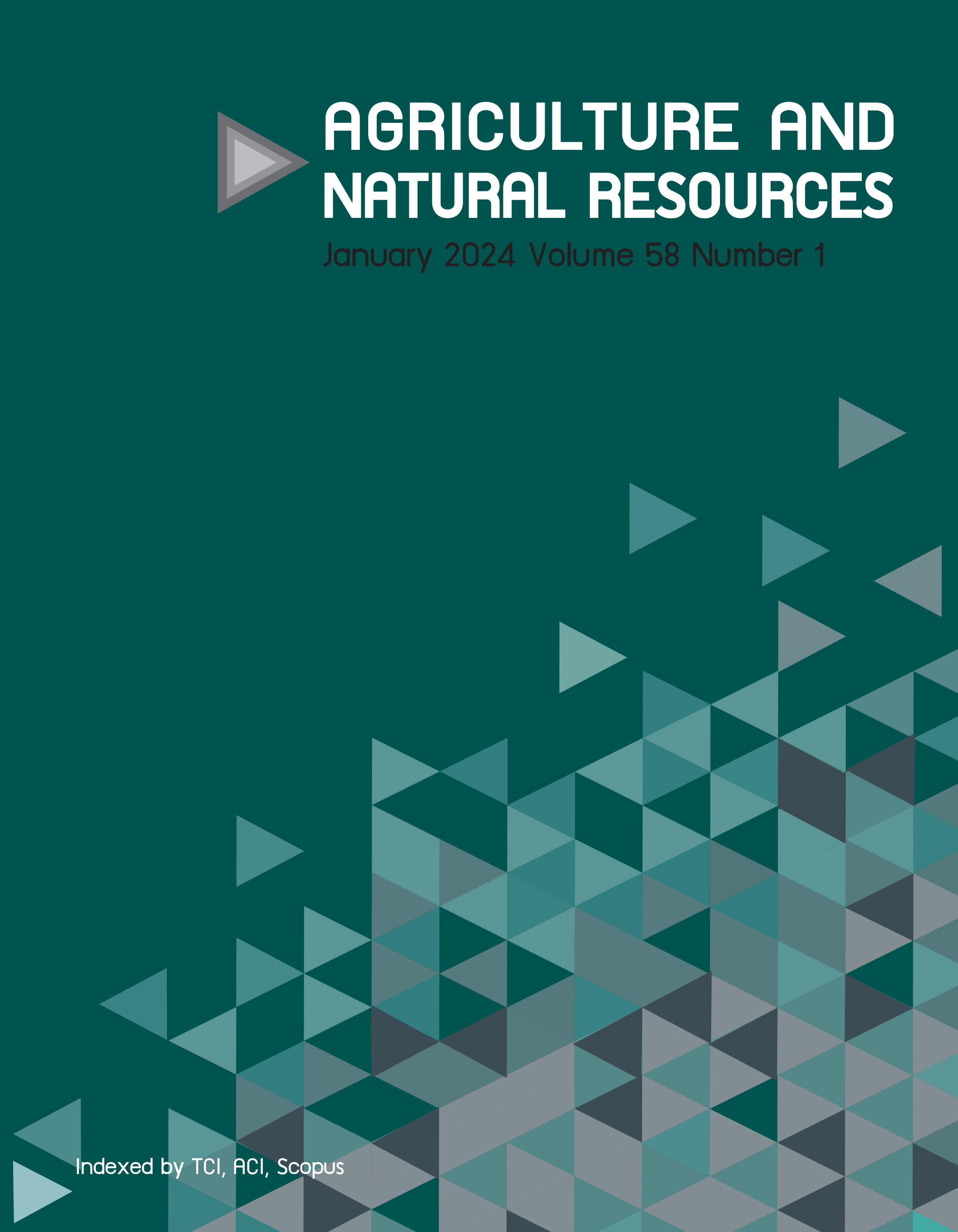Growth, total lipid content and fatty acid composition of Amphora sp. isolated from Gulf of Thailand as alternative lipid source in larviculture
Keywords:
Amphora sp., Diatom, Total lipid content, Saturated fatty acid (SFA), Unsaturated fatty acid (UFA)Abstract
Importance of the work: Amphora sp. strains contain a high lipid content that could be an excellent substitute ingredient in fish meal and fish oil.
Objectives: To evaluate the growth performance and lipid content of four Amphora sp. strains isolated from four different locations in the Gulf of Thailand.
Materials & Methods: Four Amphora sp. strains—Sichang Island (ASC), Samaesarn Island (ASS), Pran Buri (APB) and Laemyai (ALY)—isolated from four different locations in the Gulf of Thailand were cultured in F/2 medium for 13 d. Biomass and the specific growth rate (SGR) of the experimented Amphora sp. were determined. Two Amphora sp. strains with high biomass performance were further investigated for their lipid content and fatty acid composition.
Results: Among the Amphora sp. strains, ASC had the highest biomass production (1.01×106 cells/cm2), followed by ALY (3.75×105 cells/cm2), with the biomass performance of these two strains being significantly higher than for the other two strains. ALY had the fastest growth rate, while ASC grew more slowly, but was more stable. The mean (±SD) maximum lipid content of ALY was 74.35±2.46%, while that of ASC was 45.38±4.18%. The major UFAs detected in both strains included eicosapentaenoic acid, docosapentaenoic acid, docoxahexaenoic acid and stearidonic acid.
Main finding: ALY, with the fastest growth rate and the highest lipid content was the most efficient candidate for mass production, while ASC was more tolerant as an aged culture, which should be useful for long-term mass production.
Downloads
Published
How to Cite
Issue
Section
License
Copyright (c) 2024 Kasetsart Universityonline 2452-316X print 2468-1458/Copyright © 2022. This is an open access article under the CC BY-NC-ND license (http://creativecommons.org/licenses/by-nc-nd/4.0/),
production and hosting by Kasetsart University of Research and Development Institute on behalf of Kasetsart University.







